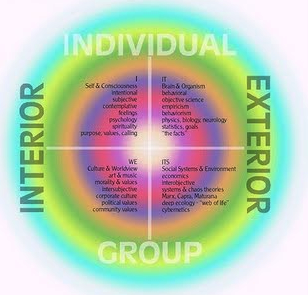Warren Kinston
22. September 2012 18:00
Aware living is what humanity's future must be about. The alternative is to live like a robot, to operate under orders, to be a slave to an ideology.

One the hardest things to be aware about are paradoxes. It can be tricky to be constructive when handling opposites that are simultaneously true. These show up in the Taxonomy as «dualities», and they rank with hierarchies as the most important primary structure within the THEE. In starting to review these systematically, I ran into an issue that I want to share.
It is about the difference between my experience-based approach and Ken Wilber's philosophical approach, called Integral Theory.
Ken Wilber started writing about levels of consciousness, but soon added to this a quadrant structure based on two universal opposites (dualities): interior v exterior, and individual v collective. However, you should note that these are conceptual distinctions. In Wilber's own words, he is providing a theory of consciousness. It's such a big theory, and so unfalsifiable, that it is a philosophy. It can be argued about—if you have that sort of ability.
By contrast, the taxonomy that I call THEE, is not a theory at all. Aware living relates to your own experiences—this includes your ideas but it has nothing to do with conceptual sophistication. Aware living is about More...
About
Warren Kinston